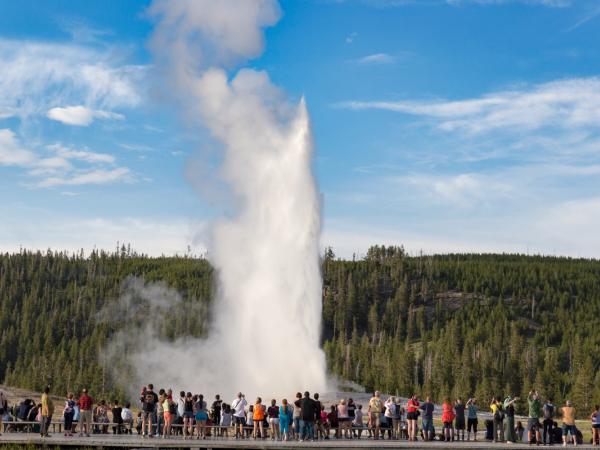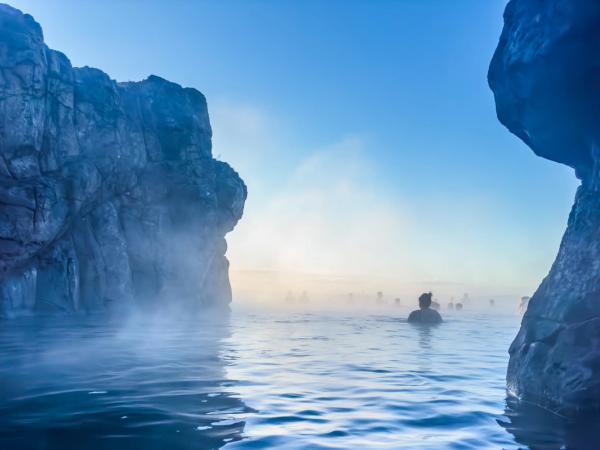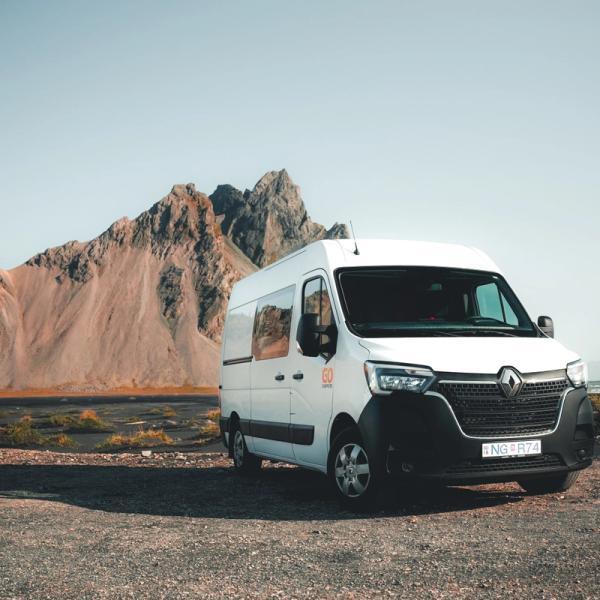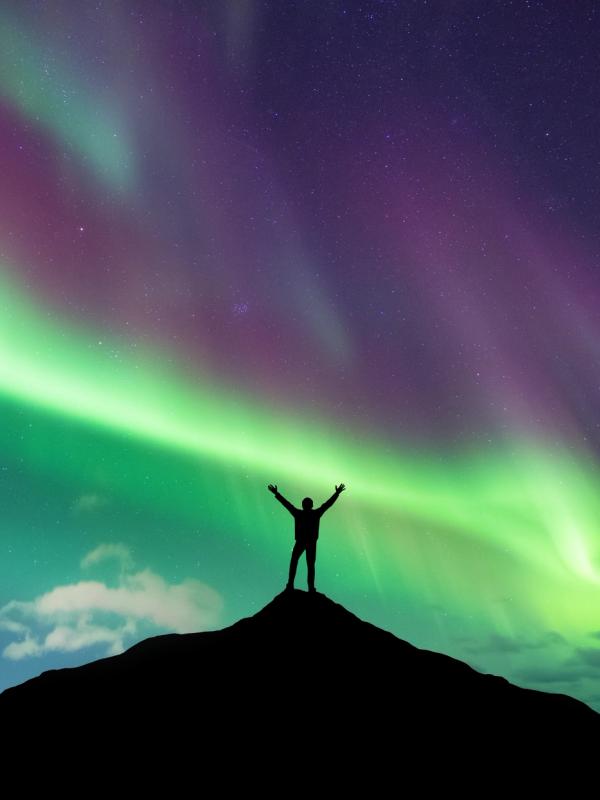
Iceland in March: What to See and Do, Weather, Tips, etc
Heading to Iceland in March? Here’s what to see and do, as well as information on weather, festivals, what to pack, and much more.
March in Iceland is a month of extremes. One minute, you’re trudging through fresh snowfall; the next, the sky is ablaze with Northern Lights. It’s the tail end of winter, but with a hint of spring in the air—longer days, clearer skies, and just enough unpredictability to keep things interesting.
There’s also a shift in mood. Icelanders can see the light at the end of the long, dark winter—literally. By the end of March, daylight stretches past 13 hours, and while snowstorms still roll through, there’s a definite feeling that the seasons are changing. You’ll find the best of both worlds: winter adventures like ice caving and aurora hunting, plus longer, brighter days to explore Iceland’s dramatic landscapes.
In this guide, we’ll cover everything you need to know about visiting Iceland in March—from what the weather might do to the best places to explore and how to plan your trip around the season’s quirks.
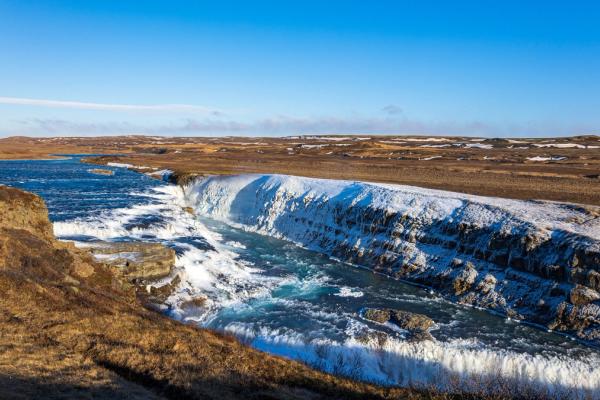
What to Expect from Iceland's March Weather
March is a tricky month for weather, which is certainly saying something in a country known for its meteorological mood swings. The temperature typically hovers around 0.5°C (33°F), with Reykjavík staying a bit warmer than other areas at -2.2°C (28°F) to 3.3°C (38°F).
Average Temperatures and Daylight Hours
The temperature differences across Iceland during March are fascinating. Surtsey, down in the south, usually records the warmest average at 4.1°C (39.38°F), while the areas north of Hofsjökull can drop to a chilly -6.1°C (21.02°F). In our experience, Reykjavík's weather is particularly unpredictable, with temperatures swinging wildly from -7°C (19.4°F) to 10°C (50°F) within the same month.
The good news? Daylight hours increase dramatically throughout March. You'll start the month with sunrise at 8:34 AM and sunset at 6:46 PM – about 10 hours of exploring time. By the end of March, you'll enjoy 13 hours and 27 minutes of daylight, with the sun rising at 6:48 AM and setting at 8:16 PM. Which is pretty good for the tail end of winter.
Typical Weather Patterns and Conditions
We would always recommend preparing for wet conditions in March – it's one of the wettest months, with an average precipitation of 82mm. Here's what you can typically expect:
- A mix of rain and snow along the coast (sometimes both within the hour)
- Heavy snowfall up north
- Strong winds from the northeast, especially near the coast
Reykjavík usually sees about 51.3mm of rainfall, while Akureyri gets quite a bit more at 71.6mm.
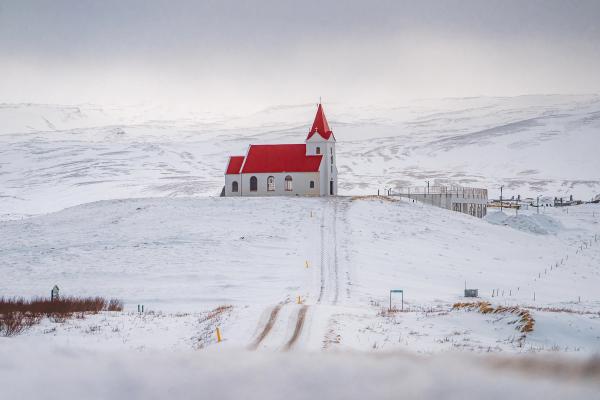
How to Monitor Weather Forecasts
Checking the weather becomes an obsession if you’re in Iceland in March. As always, the Icelandic Meteorological Office is your best friend here – they provide real-time updates on their website and app. Just note that forecasts are generally only accurate about three days in advance. Any longer than that, it becomes a bit of a guessing game.
Road conditions need extra attention, especially up in the North and Westfjords, where the weather can close roads without much warning. We recommend keeping the Safe Travel website handy for updates about weather and road accessibility, as well as Road.is.
There is a silver lining, though – March typically brings clearer skies than the winter months. Combined with those longer daylight hours, you'll find plenty of opportunities for outdoor adventures and sightseeing, including seeing the Northern Lights.
Planning Your Perfect March Itinerary
Wondering how to make the most of your March trip to Iceland? Below are three basic itineraries to give you an idea of how you could spend some time in the country.
3-day Weekend Itinerary
A long weekend in Iceland? No problem. We recommend focusing on the essentials near Reykjavík to make the most of your time. Start with the Golden Circle route – it's well-maintained and barred from any adverse weather, and it is perfectly accessible throughout March.
On your second day, spend some time in Reykjavík, checking out some of the museums, eating lots of good food, and maybe visiting a local swimming pool. Once darkness falls, check the forecast for clear skies and head out to chase the Northern Lights.
Round off your trip with a soak in a hot spring – there are plenty near Reykjavik, including the Sky Lagoon, the Blue Lagoon, and Hvammsvík Hot Springs. Before returning to the airport, explore some of the fascinating geothermal areas on the nearby Reykjanes Peninsula.
In our experience, this tight schedule works best if you can snag an early morning arrival and evening departure. Rather than trying to cram too much in, stick to the southwestern region. The roads here are kept in better shape during March's moody weather.
5-day Explorer Itinerary
Five days gives you breathing room to venture further along the South Coast. Kick things off with two days split between Reykjavík and the Golden Circle, then point your camper east toward the incredible Jökulsárlón Glacier Lagoon. Thanks to March's generous daylight hours – stretching to 13 hours by month's end – you should have plenty of time to explore each stop along the south coast.
Day four is perfect for glacier adventures. Opt for either a glacier hike or an ice cave tour. We always recommend keeping your final day flexible for any activities you might have missed –
March weather has a habit of throwing a spanner in the works now and then. It’s also a bit of a drive back to Reykjavik.
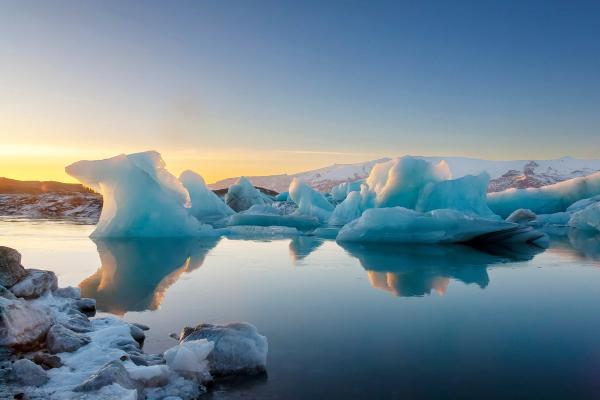
7-day Complete Iceland Experience
A full week in Iceland? This gives you time to really dig into the southern region. Just remember – March isn't like summer, and you'll need to plan carefully around the weather. Stick mainly to the southern portion of the Ring Road – it's your safest bet for winter driving.
Here's how we'd break down the week:
- Days 1-2: Soak up Reykjavík and the Golden Circle
- Days 3-4: South Coast's greatest hits and glacier adventures
- Days 5-6: Iceland’s southeast corner and ice cave exploration
- Day 7: The journey back (with plenty of stops for missed gems)
Remember that in March, flexibility is your friend. Build in some wiggle room for weather delays or unexpected Northern Lights shows.
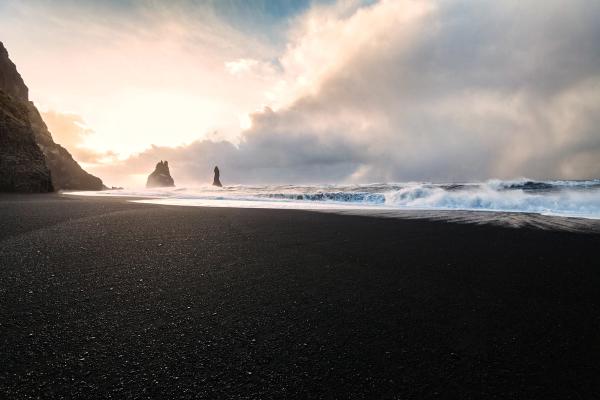
Is It Possible to Drive Around the Ring Road in March?
Yes, for the most part, it is possible to drive the ring road in March. However, bad weather might cause delays, and if you have only 7 days, it could really affect your trip.
But, barring any bad weather, the entire route is generally open in March.
Must-Visit Natural Attractions in March
March transforms Iceland's natural wonders into something truly magical. The stark contrast between winter's icy grip and the first signs of spring creates perfect conditions for exploring some of the country's most spectacular sights.
Ice Caves and Glacier Experiences
The crystal-blue ice caves beneath Vatnajökull Glacier are at their most stunning in March. Tours delve into these beauties every day during the month (if conditions are safe), so if you have the time, we highly recommend visiting the glacier along the south coast.
Glacier hikes are also popular in March. The combination of longer days and those classic soft wintery sunsets make it ideal to aim for a later tour on the ice when the sun makes the ice glow beautiful shades of blue.
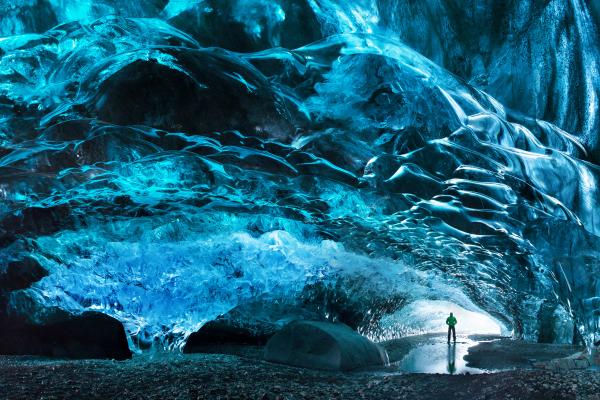
Geothermal Areas and Hot Springs
Iceland's geothermal areas offer a toasty escape from March's bite. These natural wonders come packed with fascinating features:
- Waters rich in healing minerals (your skin will thank you). Try a bathing hot spring like Hvammsvík, the Sky Lagoon, or the Blue Lagoon. Or for something quieter, Laugarvatn Fontana or Krauma Baths.
- Don’t forget to warm up by visiting one of the boiling geothermal areas (too warm for swimming). These areas, like Seltún on the Reykjanes Peninsula and the Geysir area, bubble, froth, and spit, with steaming fumaroles and bursting mud pots that look like they’re from another planet.
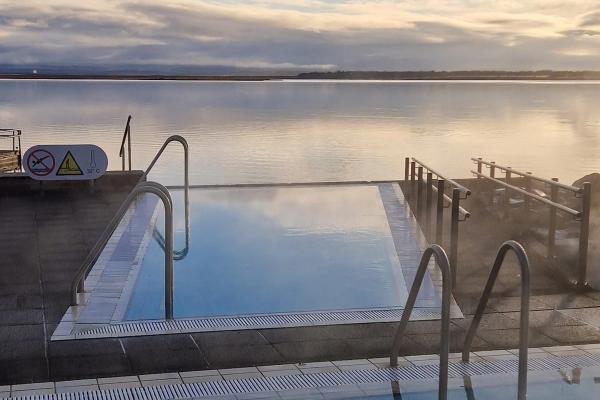
Waterfalls in Winter Conditions
Iceland’s waterfalls are usually still frozen in March, but the mighty glacial rivers are doing their best to break through the ice. There’s something beautiful about the waterfalls in winter, with the surrounding rocks sparkling with frost and huge swathes of ice everywhere.
Up north, Goðafoss puts on its finest winter suit during March, offering photographers a chance to capture something truly special. The cold transforms many waterfalls into incredible ice formations – just remember to keep your distance from any icicles or frozen structures.
The weather in March often plays nice for waterfall viewing, with clearer skies and more daylight hours than the depths of winter. The mix of winter's last stand and spring's first appearance creates some dramatic contrasts, making this an incredible time for waterfall photography.
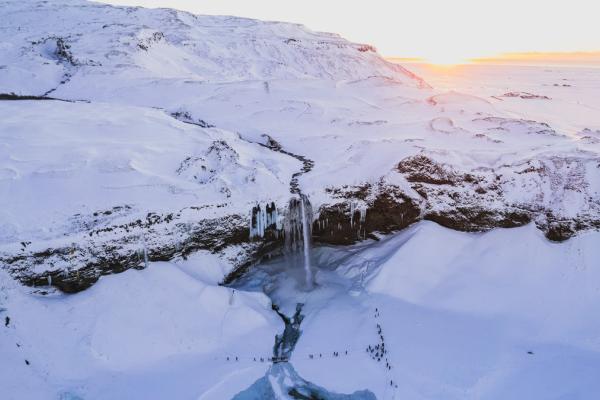
Northern Lights Hunting in March
March is one of our favorite times to chase the Northern Lights in Iceland. Thanks to increased geomagnetic activity around the spring equinox, the shows can be spectacular. And with 2025 hitting its solar maximum, we're expecting some particularly dramatic displays.
Best Viewing Locations
Let's get into the nitty-gritty of where to watch the Northern Lights. To see them, you’ll need clear skies, plenty of darkness, and a touch of luck. Catching them out the back of your campervan is fantastic, but it’s also a good idea to elevate the experience by parking yourself at one of Iceland’s finest natural locations.
For us, Jökulsárlón Glacier Lagoon is the crown jewel of aurora viewing spots – watching the lights dance across the mirror-like surface of the lake is pure magic. Right next door, Diamond Beach offers another incredible vantage point, with the black sand creating a dramatic stage for the light show.
The Snæfellsnes Peninsula is another fantastic option, especially near the iconic Kirkjufell mountain. Up north, anywhere around Lake Mývatn makes for a good viewing. Staying in Reykjavík? Head to the Grotta nature reserve – it's the darkest spot in the capital area and perfect if the Northern Lights are out and about.
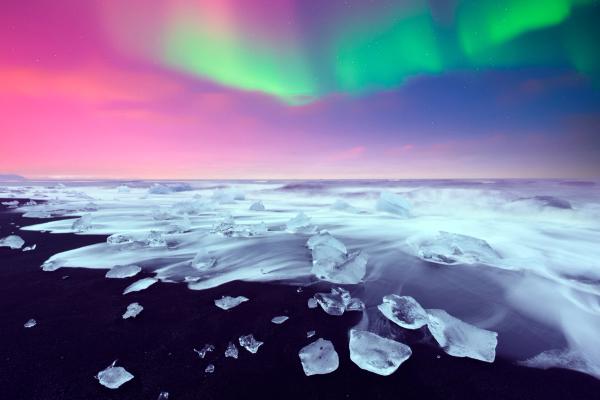
Guided Tour Options
Not sure where to start when hunting the Northern Lights? A good idea is to jump on a guided Northern Lights tour. There's a tour for every style of aurora hunter. Bus tours are your budget-friendly option, usually running 3-4 hours with pickup included. The guides are fantastic at reading Aurora forecasts and love sharing local stories about the lights.
Want to get off the beaten path? Super Jeep tours will take you to places where regular vehicles fear to tread. For something completely different, try the boat tours from Reykjavík harbor – there's nothing quite like watching the lights while gently bobbing on Faxaflói bay.
Indoor Activities for Unpredictable Weather
Because it is March, this guide wouldn’t be complete without mentioning some things to do in case the weather throws some curveballs. From world-class museums to toasty thermal pools, these spots offer perfect shelter without sacrificing your Iceland experience.
Museums and Cultural Centers
Perlan is one of the best rainy-day destinations in Reykjavík. This nature exploratorium brings Iceland's incredible indoor landscapes with interactive exhibits that'll make you forget about the weather outside. Another way to experience the drama of Iceland’s landscapes is to visit FlyOver Iceland, where you can soar through the skies above the entire country.
For history buffs, the National Museum of Iceland is the best bet. It’s also worth considering the Settlement Exhibition, where Viking ruins meet modern tech for an interactive look at Iceland during the Settlement Age.
Some other experiences that involve Iceland’s natural elements include the Northern Lights Museum, Aurora Reykjavík, or the Lava Show in Vík, where lava rocks are heated back up into molten lava in front of a small crowd.
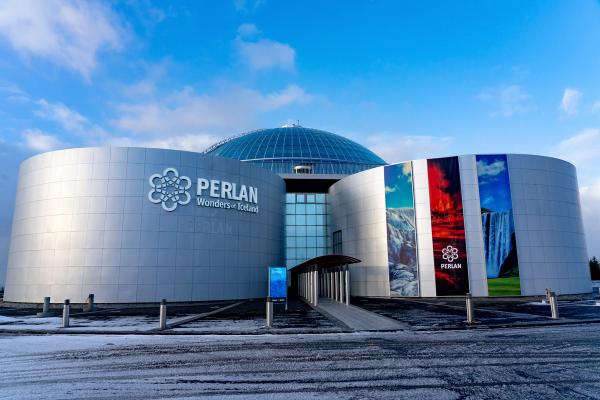
Thermal Pools and Spas
No matter the weather, enjoying some of Iceland’s abundant natural hot water is always a good idea. Of course, the country’s famous hot springs are mentioned a few times in this article. Then, there are the neighborhood swimming pools, with just as much hot water and loads of locals as well.
In Reykjavik, Laugardalslaug is a popular option. Behind Hallgrímskirkja and most convenient to downtown Reykjavik is Sundhöllin, one of the oldest pools in the city. Vesturbæjarlaug is also a good option, and with a car, all the pools of the capital area are accessible.
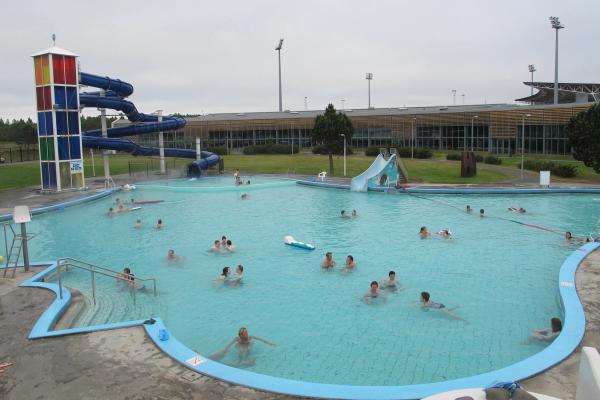
March Festival Experiences
March lights up Iceland's cultural calendar with some fantastic festivals. We love how these events bring warmth and energy to the late winter atmosphere, showing off everything from Iceland's incredible food scene to its rich brewing history and vibrant music culture.
Food and Fun Festival Highlights
The Food and Fun Festival (March 12–16th, 2025) turns Reykjavík into a foodie's paradise. It’s one of the most exciting times to be in the capital – imagine world-class chefs from both sides of the Atlantic taking over some of the city's best restaurants, each putting their own spin on local ingredients.
The competitive side of things really gets interesting – these talented chefs duke it out to create the most impressive three-course meal using only Icelandic ingredients. What started as a clever way to boost tourism during the quiet season has grown into something truly special, drawing food lovers from around the globe.
Beer Day Celebrations
March 1st is Beer Day in Iceland, which celebrates the end of a 74-year beer prohibition that lasted from 1915 to 1989. While other types of alcohol were allowed in the 1930s, beer remained off-limits until 1989, thanks to some interesting social concerns.

What to Pack for Iceland in March
Packing for Iceland in March is a bit of an art form. The weather can swing wildly from one extreme to another, so you'll need to be prepared for everything from sunny spring days to full-on winter storms. Here's our guide to staying comfortable and ready for whatever Iceland throws at you.
Essential Clothing Items
March, with its cold and unpredictable weather, calls for quite a few different layering options. Start with a base layer (wool or synthetic material is good), followed by a couple of good mid-layers for insulation. If possible, it’s best to try and have one lighter and one heavier for the mid layer.
Then, your outer layer should be waterproof and windproof but also breathable.
Here's what should make it into your suitcase:
- Waterproof hiking boots that won't slip on ice
- Thermal base layers
- Pants that can handle rain and snow
- Serious winter gloves and a beanie
- Several pairs of wool socks
- Swimwear and a towel (hot springs!)
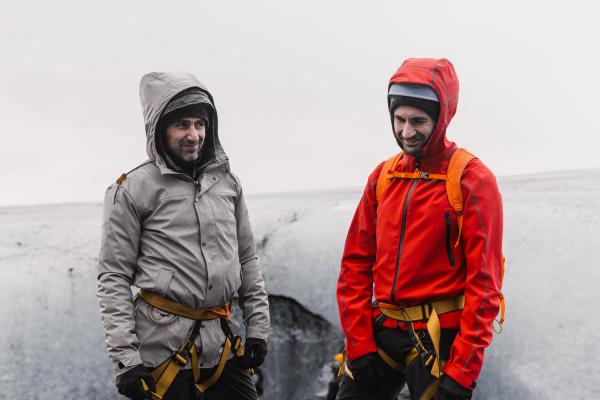
Visiting Iceland in March
It’s not a hugely popular time to visit Iceland, but March is one of the most magical times in the country. Sure, the temperatures might still be chilly, but you'll get to experience the country's raw beauty without fighting through peak-season crowds. We love how winter's last stand mixes with the beginning of spring and the availability of winter tours with plenty of daylight hours.
You'll need to plan carefully for a March visit. Pack the right gear and keep your plans flexible, and you'll discover more incredible experiences than you can shake a stick at. From chasing the ethereal Northern Lights to exploring crystal-blue ice caves or participating in local festivals, March offers endless possibilities.

